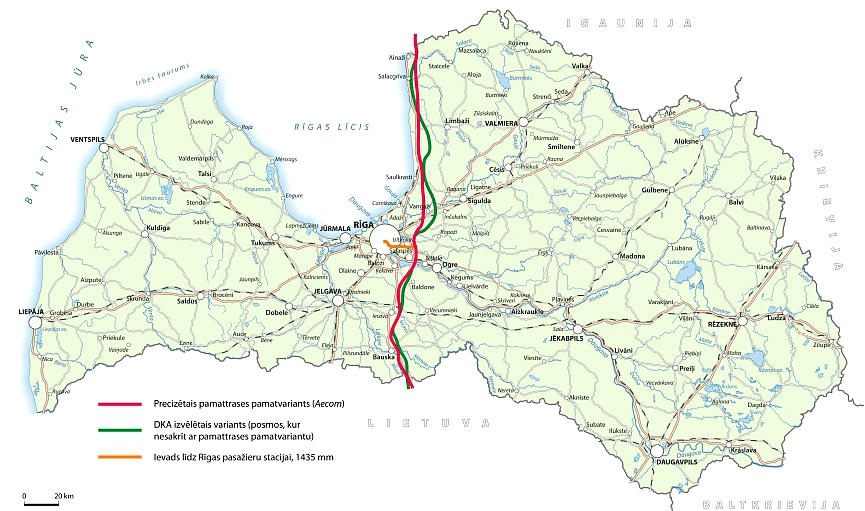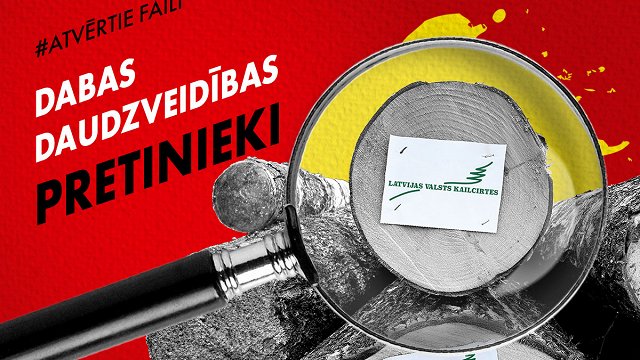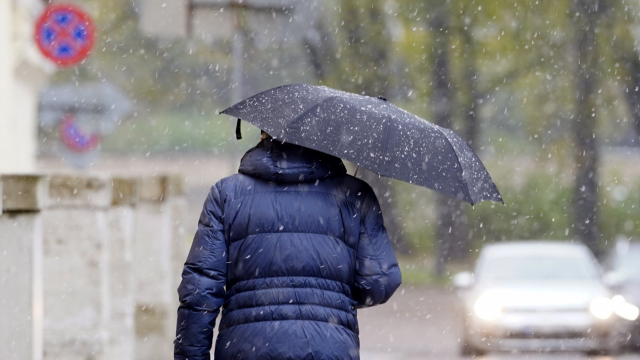The government has already accepted the route for Rail Baltica through Latvian territory on a map it considered during its cabinet sessions. However, an association called "Latvian land, nature, people" hopes to get the route changed using court action.
Ieva Duljevska, a spokeswoman for the association, says residents have the impression officials do not want to hear their objections.
"We, through the courts, demanded that the principle laid down in the European Union as a basic principle for the creation of a high-speed route be established - that the fairest, fastest and most economically advantageous route should be constructed.''
The Administrative District Court has examined both claims, but the presiding judge hearing the case Aiga Putniņa, ruled that though it was understandable that people through which the route would pass would have objections, the alternative route they proposed would pass through an EU-certified protected nature reserve.
The result is an unusual situation that is the reverse of what is often seen in many such projects in Europe: residents are actually protesting not to protect a nature reserve but to urge that the rail route should pass through a nature reserve.
"There are more stringent requirements for this territory, not only at the level of Latvia, but at the level of the European Union, and the law makes this natural area specially protected," said judge Putnina.
''One of the purposes of the protection of this area was preserving a habitat where there are broadleaved trees, ancient and mixed broadleaved forests, which led to the creation of the respective nature reserve. One of the goals was to protect this habitat. As a result of the putting the route through it, this biotope would be divided," said Putniņa, adding that under current rules nature reserves can only be crossed if there are no viable alternatives.
The second objection, concerning the route near Skulte, sees the protesters arguing that a particular curve in the track is unnecessary. The route was chosen with the intention of creating an industrial park at a future date. In this case, the court ruled that the group's objections were political in nature and therefore not within the remit of the court.
'' In both judgments, the courts have recognized that the state has wide powers of discretion to determine the position of the track. And this can be based on strategic, economic and social considerations. Moreover, it must be taken into account that the route must be compatible with the stages of the Estonian and Lithuanian routes,'' said Putniņa.
''The court's task was to verify that these environmental protection requirements on the sections of the route were respected,'' said Putniņa.
The judgments have not yet come into force and claimants have the opportunity to appeal before the beginning of September. They have signalled their intention to do so.
The defendant in these proceedings is the Ministry of Transport. However, ministry representatives refused to comment on the case until the proceedings had been completed.
To find out more about Rail Baltica, you can hear our interview with Rail Baltica chairwoman Baiba Rubesa below.



























